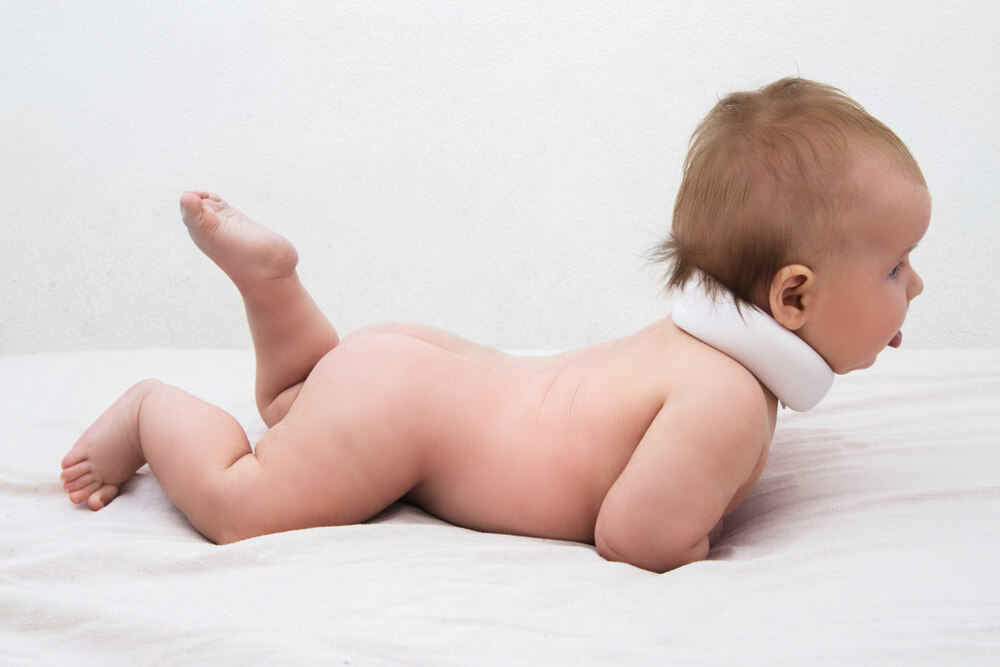Infant Torticollis
Doctors have given infant torticollis the term of “wry neck.” This happens whenever the baby’s neck has twisted, and the result is that their head tilts to one side while the chin tilts to the other. There are a few different causes for this condition including accident, illness, or birth injury. Let’s highlight some of the symptoms so that you will understand how to address this problem.

The Symptoms
Understanding infant torticollis symptoms can help you catch the problem with your child and diagnose it. You might notice these signs as either severe or mild, depending on the circumstances. Some of the most common symptoms that you will encounter with this condition include:
- Neck stiffness
- Awkward chin positioning
- Neck muscle swelling
- Head tremors
- Constantly leaning the head in one direction.
- One of the child’s shoulders sits up higher than the other.
What Causes This Birth Disorder
Torticollis can happen for a variety of reasons. Still, there are some circumstances where you won’t even understand why the child is experiencing this condition. For example, this condition can happen due to the doctor using forceps to deliver the child or pulling the child out forcefully or improperly during the delivery. The child’s spine could also have been misaligned from their position in the mother’s womb.
What happens when it occurs after birth? This condition can happen after the child has been born—for example, tumor, tonsillitis, Grisel’s Syndrome, and accidents where the child fell greatly.
What You Need to Know
This condition is fairly common, and you might even feel upset to see that your child has a tilted head. However, it would be best to understand that your child most likely doesn’t feel any pain from having this condition. You may notice this even more as your child gets more control of their head.
How Do They Treat It?
You may be wondering how doctors will treat this birth injury. Your child may need to stretch their neck muscles to help with this condition to help the affected side. If the stretching fails, doctors might opt for surgery, but they typically wait because they can’t perform it until the child turns four years of age.
In most cases, babies will improve through position changes and stretches. Nevertheless, it could take up to six months before it goes away in its entirety. For more severe cases, it could take longer than a year. Luckily, this condition isn’t quite as serious as a condition like cerebral palsy, but you still don’t want your child to have to go through this uncomfortable condition. Infant torticollis is the third most common congenital disorder for babies.
Article Citations
